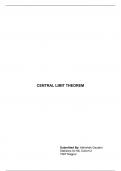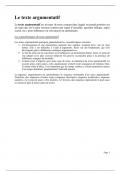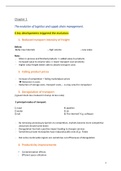Summary
Summary Central Limit Theorem
- Course
- Introduction To Statistics
- Institution
- Stanford University
The Central Limit Theorem is an integrated theory in statistics principally charting the behaviour of the sum (average) of a large collection of independent identically distributed random variables. It is asserted that irrespective of the parent probability distribution of these variables, the pare...
[Show more]








